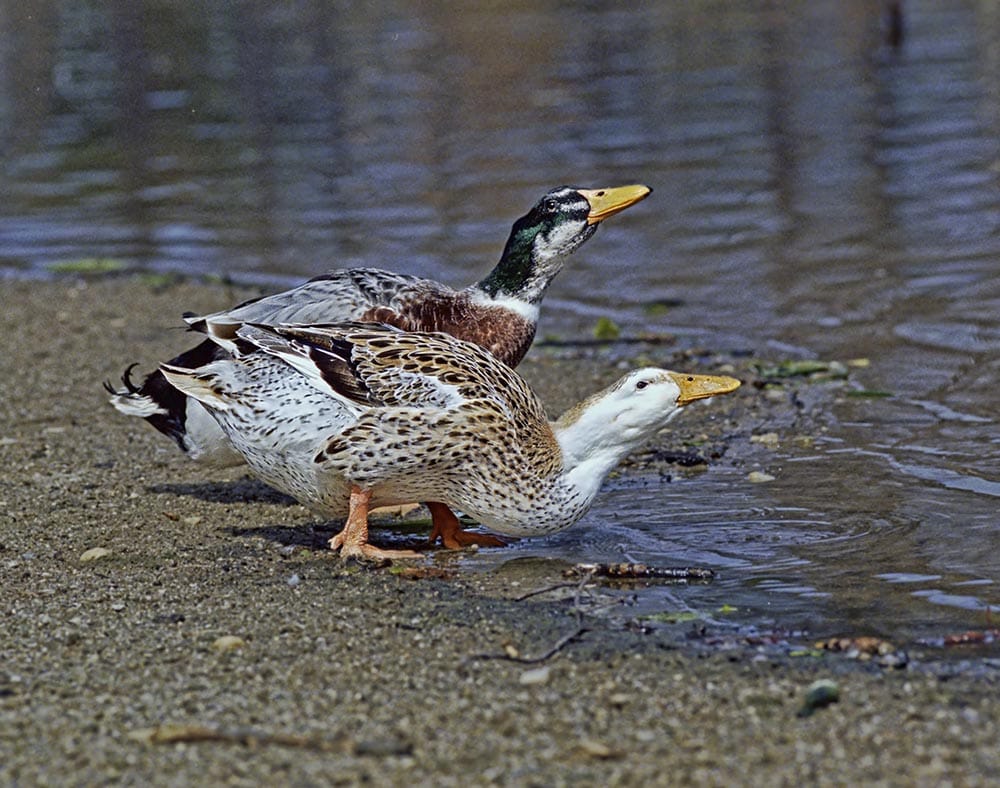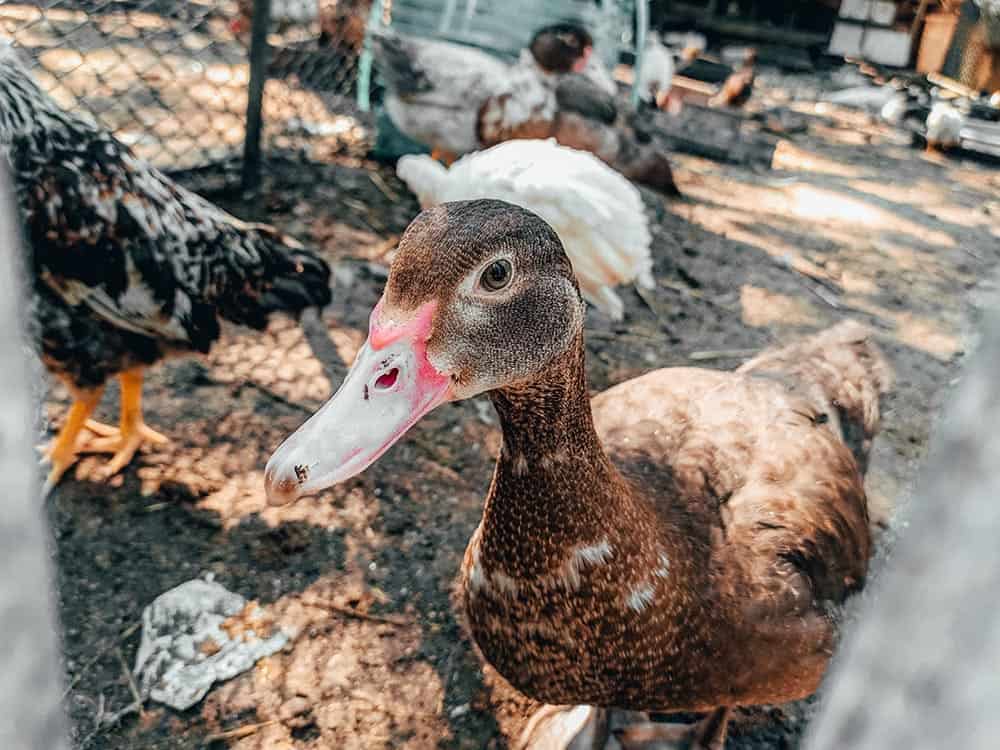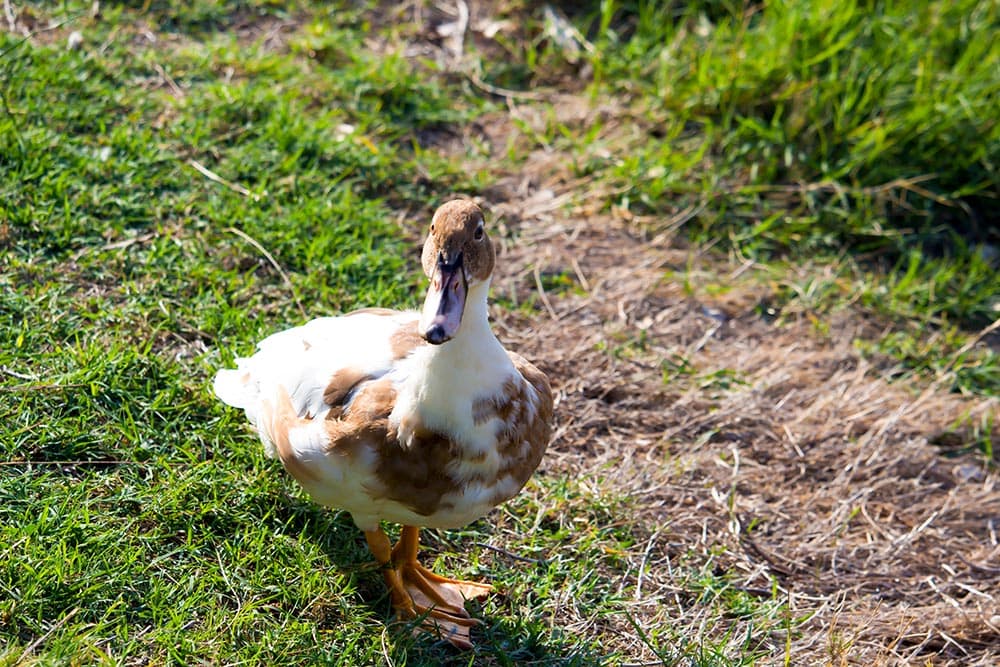Ducks are so much fun to have on any small-scale farm. Even if you don’t have an actual pond, you can still own certain duck breeds. When you’re searching for compatible breeds for your setup, you might come across the Saxony Duck.
Lucky for you, these amazing waterfowl work in nearly every situation. Plus, they are beneficial to have around—a multipurpose breed. Let’s get to know the Saxony a little better.

Quick Facts About the Saxony Duck
| Breed Name: | Saxony |
| Place of Origin: | Germany |
| Uses: | All-purpose |
| Drake Size: | 10 pounds |
| Duck Size: | 8 pounds |
| Color: | Neutrals |
| Lifespan: | 9-12 years |
| Climate Tolerance: | Cold hardy |
| Care Level: | Easy |
| Production: | High |
| Temperament: | Docile, foraging |

Saxony Ducks Origins
Thanks to Albert Franz of Chemnitz, the Saxony duck arose in the 1930s from Germany. All of the originals were nearly 100% lost after World War II. Luckily, Franz was able to rebuild the breed back from near extinction.
During the late 1950s, this breed was recognized in West Germany. They began to make their way outward, traveling to Switzerland by the late 1960s.
Eventually, they made their way to America. In 1984, thanks to David Holderread. They were accepted into the American Poultry Association in 2000.
They are still very much loved by poultry keepers, breeders, and associations today. However, they are rare—making them even more special.

Saxony Duck Characteristics
Many Saxony ducks are described as active, lively, and mischievous. They tend to get along very well with other farm life and people. They are relatively quiet compared to some breeds, and neither gender quacks.
They might not be the kind of duck you can hold on your lap, but they are friendly. They might follow you around as you make your rounds, asking for more yummy food.
The Saxony duck doesn’t fly, so you don’t have to worry about losing track of them or spending money on tall fencing. These ducks make excellent foragers and will stay busy eating delicious slugs, snails, and other goodies around the yard.
On average, these ducks live 10 to 12 years. They are slow-growing but are quick to mature.
Uses
The Saxony is an all-purpose breed, meaning you can use it for quality meat and egg production. The Saxony female lays up to 200 large white eggs per year. They also have an excellent meat quality, producing dark, rich birds with ideal table weight.
Saxony females often go broody and will sit on eggs until they hatch. They aren’t picky, either. They can hatch clutches of eggs for you if you want to breed. They might even hatch your chicken eggs if they’re on the same pile. Because they make such amazing mothers, it gives them another valuable purpose.
These ducks produce more than enough for a single family. But if you wanted a flock of ducks, you could even profit from selling these eggs.

Appearance & Varieties
Saxony ducks have beautiful tones in their feathering and amiable expressions. They often give off a regal appearance with their barreled chests and steady waddle.
The Saxony Duck is a recognizable breed, touting neutral coloring that is instantly recognizable by poultry enthusiasts. Interestingly, the Saxony only has one color—and now other species, like the Indian runner, name a color pattern after the Saxony.
The color would be described as a mottled mix, sporting cream, rust, beige, and silver hues. Each one is a little different, despite their limited coloring.
The Saxony Duck is a heavy-bodied breed. These ducks are sexually dimorphic, with males outweighing females slightly. Both genders have yellowish-orange beaks, legs, and feet. Unlike ducks, drakes have a powder blue head and neck.
These ducks are hardy and easy to keep.
Population
The Saxony duck is a useful but, unfortunately, a rare breed of duck. There are roughly five registered breeders and 2,000 Saxony ducks across the country. The Saxony duck is considered threatened in the USA.
Distribution
The Saxony duck was relatively well known in Europe. The Hollerread Waterfowl Farm imported these ducks in 1984. So, while their numbers are diminishing, they are readily available in many areas.

Habitat
Like all other waterfowl, Saxony ducks need direct access to fresh water. They need to clean their nostrils from debris and build up to clear nasal passages.
Ideally, the more water, the better. While they can survive with only moderate water, ducks will be happier freely swimming.
If you already have poultry, you know the ropes. They need feed, water, and shelter. Some choose to free-range ducks while others keep them enclosed. Since Saxony ducks don’t fly, you can easily keep them in a fenced-in area.
Take note that if you allow these ducks to free-range, they can be susceptible to predators. They are slow and flightless, making them a target for larger animals like coyotes, bobcats, lynx, and even foxes.

Are Saxony Ducks Good for Small-Scale Farming?
Saxony ducks are the perfect duck for nearly any setup—including your small-scale farm. The trick will be locating a breeder or hatchery that has them. If you do your homework, you might find Saxony ducks that can ship to you. Otherwise, you might have to travel.
If you are lucky enough to have them, the Saxony is a pleasure to have around—making fantastic layers, foragers, mothers, and meat birds.
See Also:
- Muscovy duck: Facts, Uses, Origins & Characteristics
- Indian Runner Duck: Pictures, Info, Traits, and Care Guide
Featured Image Credit: alybaba, Shutterstock
